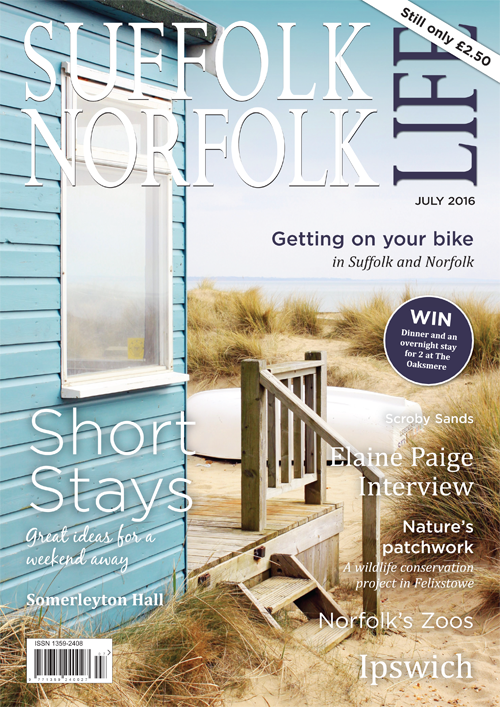- A feature from the July 2016 issue of Suffolk Norfolk Life magazine
 Click to view this issue »
Click to view this issue » - Category
- Nature
Laurie Forsyth tells of an important urban wildlife conservation project in Felixstowe
When your hearing is as poor as mine, you have a strong pointer to what wildlife extinction means. Unless I actually see them, grasshoppers, gold crests, skylarks and swifts no longer exist in Suffolk and Norfolk. Thankfully, that is rubbish, but it demonstrates that in time, you become used to absence, and used to a sense of foreboding.
Our countryside is emptier – we now expect to see only a few birds, butterflies, bees and wild flowers. We don’t like it, and that explains the soaring memberships of the UK’s galaxy of nature conservation charities.
Nature is often badly affected by what people do, and we have seen decades of habitat losses, population declines and the continuing fragmentation of the countryside. Despite the overall gloom, there have been many nature conservation successes, certainly in Suffolk and Norfolk. Our local county wildlife trusts, plus the RSPB, the National Trust and owners of private County Wildlife Sites, Local Nature Reserves and farmland have achieved a great deal for wildlife in heathlands, woodlands, meadows, wetlands and reedbeds. Today, nature conservation policy is to connect – or rather, reconnect – the pieces of our fragmented countryside for wildlife, to make Living Landscapes. Our gardens are a vital part of the patchwork: by connecting with each other they provide green corridors between town and country for wildlife to use. Your personal patch is so important to wildlife that Suffolk and Norfolk Wildlife Trusts and the RSPB prefer to call them Living Gardens.
Felixstowe’s Community Nature Reserve is among the first of its kind. I hope the idea spreads rapidly and far, because it has the potential to do so much good – for wildlife and for people. It is a simple concept: people have made their gardens better for wildlife, and they now form a linked patchwork of small nature sites that wends through the Felixstowe area. Collectively, the urban and rural community is accepting responsibility for its wildlife, and that is a great thing to do.

